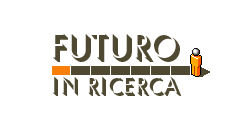DREAMS: Design of Reliable, Exact, and Application-oriented techniques for geometric Modeling and numerical Simulation
Numerical and geometrical algorithms for scientific visualization, 3D interactive geometric modeling and processing, together with engineering simulations, are key components in modern computer aided applications. In particular, the development process of the industrial digital product consists of the following three main technologies:
- Computer Aided Design (CAD),
- Computer Aided Engineering (CAE) and Finite Element Analysis (FEA),
- Computer Aided Manufacturing (CAM), including programs for Computer Numerical Control (CNC) machines.
The geometry of the computational model is usually designed by a CAD system using Non-Uniform Rational B-Spline (NURBS) representations. This model is subsequently processed (and approximated) in order to be connected and exploited in many ways, depending on the specific profile and need of the user, through the CAE/CAM software tools. Both designers and engineers develop their own geometrical and numerical models relying on these interconnected procedures. The underlying representations necessarily play a fundamental role, which naturally reflects into the accuracy and robustness of the overall process. The flexibility and accuracy of any CAD system faces three real computational challenges:
- C1: to preserve the exact geometry of the model;
- C2: to overcome the limits of current representations;
- C3: to promote integration with CAM/CAE applications.
The next generation of software for automatic design and production will necessarily have to overcome the lack of accuracy and flexibility associated to the current representations by providing a more in-deep interaction between CAD/CAM/CAE systems. The DREAMS perspective will explore new paths of research for the identification of geometric representations (C2) suitable for numerical control programming and simulation. They have to satisfy the demands imposed by their use in the application framework (C3) and at the same time to take into account the accuracy of the geometric model (C1). Towards this long-term goal, the project will face different kind of short-term theoretical and computational issues. In particular, DREAMS will address the challenging problems C1-C3 that arise in the identification, characterization and use of advanced geometric and analytical techniques. The research topics covered by the project can be organized as follows:
- T1: algebraic-geometrical structures in Computer Aided Geometric Design (CAGD) and rational motion planning schemes;
- T2: adaptive splines as alternative to the NURBS model in Isogeometric Analysis (IgA);
- T3: interconnections between applied geometry, CAGD, approximation theory, and IgA.
Each of the above topics has an application-driven motivation, namely computer aided motion planning (T1), IgA (T2), and interfaces between current CAD representations and new spline techniques (T3).
